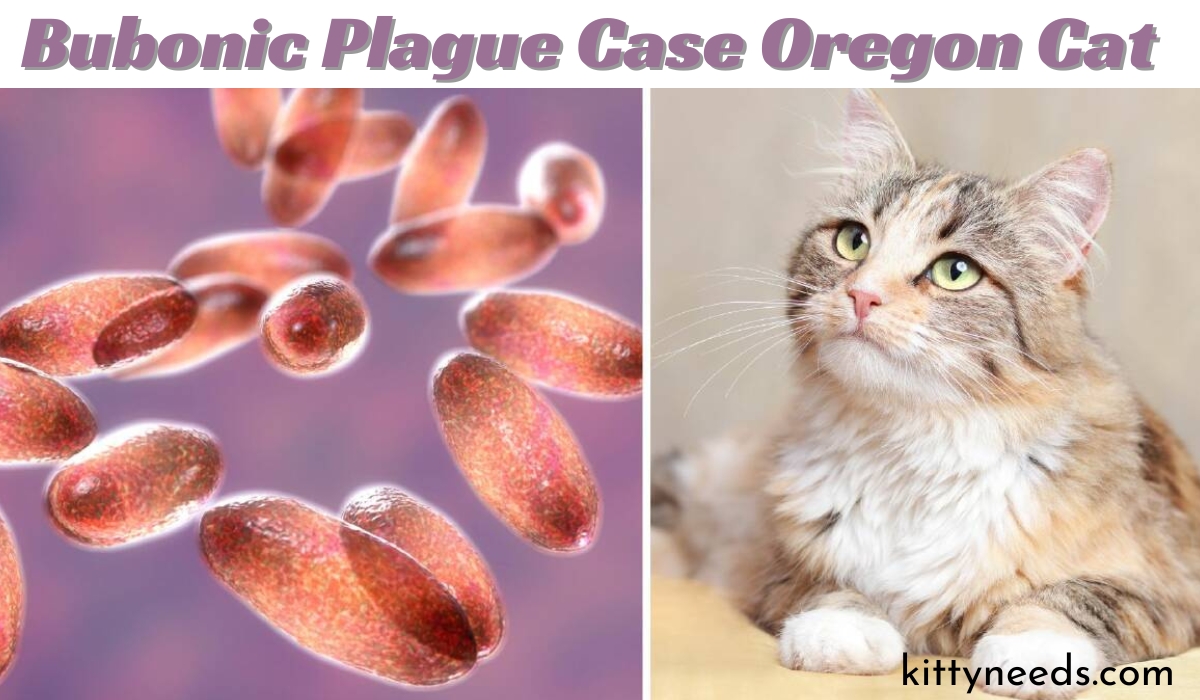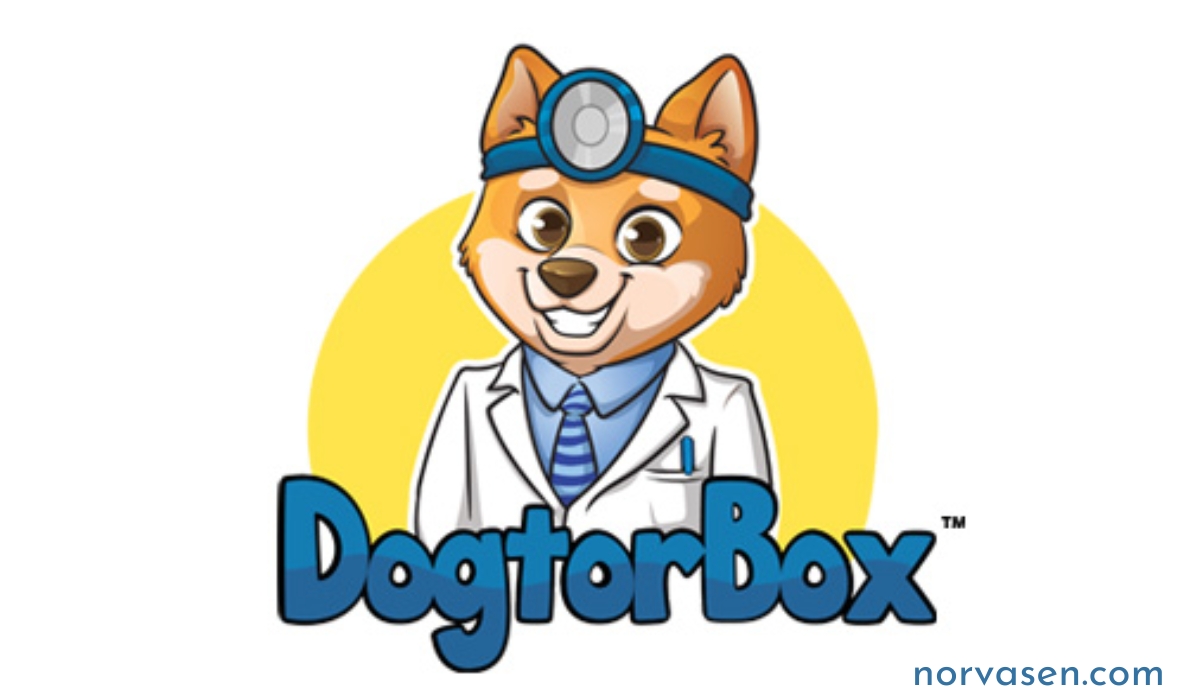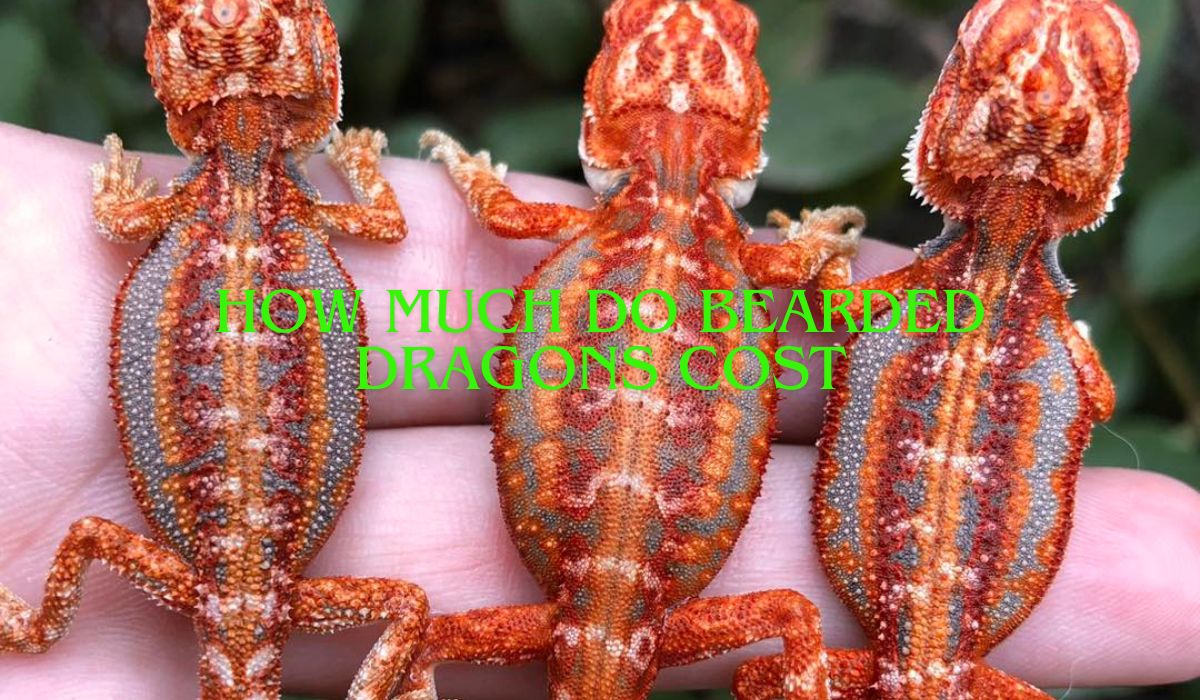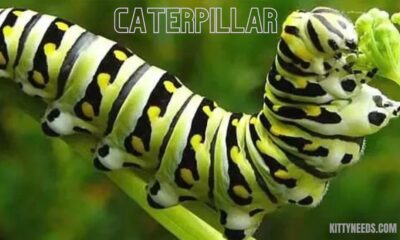Pets and Animals
Bubonic Plague case oregon cat: A Modern Tale of Medieval Disease

bubonic plague Case Oregon Cat
Imagine scrolling through your news feed and coming across the words “bubonic plague” in a headline, not from a history book or a period drama, but in a contemporary health alert. It’s the kind of news that sends a chill down your spine, reminiscent of a time centuries ago when the bleak notes of a plague doctor’s bells echoed through the streets. Unbeknownst to many, the harrowing disease that once defined the darkest chapter of human history has made a startling and rather unexpected appearance in Oregon. A resident of the Beaver State has recently been diagnosed with this age-old scourge. The most unusual factor? The index of suspicion points towards a somewhat unlikely carrier: a pet cat. This case serves as a stark reminder that the pandemics of old are not consigned to the annals of the past—they can materialize in our present, often in ways we least expect.
Within this extensive exploration, we will unravel the intricate web of events that led to this diagnosis. We will examine the species jump from rodents to felines, and ultimately to humans. We will discuss the fascinating biology and transmission of Yersinia pestis, the bacterium behind the bubonic plague, and explore the often-misunderstood dynamics between domestic animals and severe illnesses. The infected resident’s ordeal will not just be a medical curiosity; it will provide teachable moments for all who share their lives with furred companions and those keen on understanding the undercurrents of public health threats.
Unveiling the Oregon Plague Case
The news that a person in Oregon had fallen ill with bubonic plague might have sparked a range of emotions – disbelief, curiosity, and undoubtedly, concern. The Oregon Health Authority confirmed the case in June, alerting the general public to the potential risks posed by the disease. The individual, whose specific details remain private, discovered an unexpected foe in their own home—nurtured and fed as a beloved pet, the cat carried within it a microbial time-bomb that threatened its human counterparts.
Historical Echoes of the Bubonic Plague
The term “bubonic plague” evokes shadowy recollections of the deadliest pandemic recorded in human history—the Black Death. Between the 14th and 17th centuries, the Black Death decimated populations across Asia, Africa, and Europe, altering the societal fabric of the time. The pandemic—which was a combination of bubonic, septicemic, and pneumonic plagues—was primarily caused by Yersinia pestis, a bacterium transmitted by fleas from rodents to humans. Its resurgence is symbolic of the unpredictability of infectious diseases and serves as a testament to the adage, “History repeats itself.”
Plague Amidst a Landscape of Modern Medicine
The modern healthcare infrastructure is a far cry from the rudimentary systems that battled against the spread of plagues in the Middle Ages. However, the circumstance in Oregon highlights that the threat is not obsolete. No matter the advancements in medical science, pathogens like Yersinia pestis retain their potency to cause outbreaks. As we explore the peculiar case of the Oregon resident, we are reminded of the fragility of the health-society balance and the necessity for continued vigilance.
Understanding the Transmission of Bubonic Plague from Cats
Bubonic plague in cats and its subsequent transmission to humans are rare events, adding an air of mystery to the Oregon case. Yet, epidemiologists and veterinarians recognize the established pathways through which these transmissions can occur, often pointing to ecological factors that bring animals and humans into close proximity.
Feline Susceptibility to the Plague
Felines, particularly domestic cats, are among the species susceptible to contracting the plague. One of the avenues through which they become infected is through their contact with rodents that harbor the bacterium. The exchange is commonly framed by the close association between cats and their prey—rodents—which can lead to fatal encounters with Yersinia pestis.
From Feline to Human: The Chain of Infection
The plague’s transmission from cats to humans is a narrative that unfolds across shared spaces and mutual care. Where cats serve as companions and protectors—as they are rightfully cherished by many—this relationship can falter in the face of zoonotic diseases like the plague. Flea bites from an infected cat are one of the most common vectors for transmission to humans. In addition, direct contact with the cat’s bodily fluids during times of disease can pose risks, albeit less commonly. The Oregon case underscores the vulnerability that moments of intra-species companionship can bring.
Recognizing Other Vectors of Plague Transmission
While the focus of the Oregon case is the transfer of the plague from a pet cat to a human, it is important to recognize that this ancient malady has various pathways of transmission. Understanding these routes can aid in the vigilance and prevention of potential outbreaks among communities at risk.
The Peril of Fleas
Fleas are formidable vectors in the spread of the bubonic plague. These blood-sucking parasites have been integral in historical outbreaks, notably the Black Death. When they feed on the infected blood of a host, usually a rodent, the flea becomes a miniature reservoir of the Yersinia pestis bacterium. Subsequent bites they administer to other creatures, including humans, thus become potent delivery mechanisms for the disease.
The Clandestine Role of Infected Rodents
The very rodents that are frequent targets of feline predators are the primary reservoirs for Yersinia pestis in the wild. Rats, ground squirrels, and prairie dogs are known carriers, and their demise, though perhaps a relief to the nearby household, can also signify the release of plague-infested fleas into the environment. Human encounters with infected rodents, through bites or even the disturbance of their burrows, are additional avenues for the plague to take hold.
Treatment of Bubonic Plague: An Ounce of Modern Intervention
Despite its grim reputation, bubonic plague is a treatable condition when diagnosed early. The swift administration of antibiotics can significantly mitigate its more severe forms and reduce the impact of epidemics. This section of the exploration will elaborate on the therapeutic strategies employed to combat the disease and save the lives of those afflicted by it.
Timeliness in Antibiotic Intervention
Antibiotics are the frontline of defense against Yersinia pestis. Identified and developed in the latter half of the 20th century, these antimicrobial agents have transformed the outlook for plague victims. When diagnosed in its bubonic form, characterised by swollen lymph nodes, prompt antibiotic therapy can prevent progression to the systemic and more dangerous stages of the disease.
The Three Antibiotic Regimens
There are several antibiotics effective against the plague, and the choice of regimen depends on the individual’s health and the strain of Yersinia pestis. Streptomycin, gentamicin, and doxycycline are cornerstones of treatment, and their timely administration carries the potential to save lives.
The Role of Palliative and Supportive Care
In cases where the plague has advanced to its septicemic or pneumonic stages, the prognosis becomes more severe, necessitating additional palliative and supportive measures. From respiratory support for pneumonic plague to end-organ failure management for septicemic plague, the management of these advanced states requires a comprehensive and multifaceted approach.
Prevention: The Barrier Between Health and Hazard
Prevention is paramount when it comes to infectious diseases, and the bubonic plague is no exception. This section focuses on proactive measures that, if incorporated into daily life, can serve as potent deterrents against outbreaks and individual infections.
An Ongoing Quest for Vaccines
Vaccines for the plague exist, yet their usage is predominantly in the context of high-risk occupations and scenarios, such as laboratory settings. However, their continued development and subsequent availability could provide a notable shield against the disease, especially in endemic regions.
Environmental Management as a Preventive Strategy
Environmental cleanliness and habitat management can curtail the burgeoning rodent populations that serve as carriers. By minimizing the conditions that are favorable to these animals, we indirectly reduce plague risks.
Health Hygiene and Zoonotic Awareness
The serene co-existence with diverse animal species that many cultures cherish requires an added layer of awareness regarding zoonotic diseases. Hygiene practices that limit exposure to potential carriers, such as avoiding the handling of wild animals and their carcasses, are essential precautions.
The Case of the Plague in Oregon: A Summary
What does the Oregon resident’s encounter with bubonic plague tell us? It is a narrative laced with lessons on the interconnectedness of disease ecology and human activity, on the importance of harmonizing with the animal kingdom yet respecting the invisible threads of infection that bind us.
The Unusual Pathways of Infection
The index case is an anomaly—an unlikely intersection of a feline companion and a bacterium that once laid waste to entire civilizations. Yet, it is as compelling as it is jarring, a manifestation of the disease’s potential to surprise and of the humbling adage that we are never truly beyond the reach of our pathogens.
A Cautionary Tale for Pet Owners
To pet owners, the caution resonates with particular poignancy. The very creatures that bring warmth and companionship to the human experience can carry with them risks that necessitate attentive care and awareness. Regular veterinary checkups, timely preventives, and a keen eye for any signs of illness in pets are more than obligatory—they can be life-saving.
The Broader Implications for Public Health
From a macroscopic standpoint, the insurgent plague case serves as an echo of the call for robust public health mechanisms. Systems that harness knowledge, vigilance, and swift response are immeasurably valuable against unpredictable diseases.
YOU MAY ALSO LIKE
How Often Do You Take A Cat to the Vet? A Guide for Caring Owners
In Closing: The Ongoing Battle Against Ancient Foes
As we conclude this deep exploration into the convergence of modern life and ancient disease, we are left with a profound sense of the intricacy and fragility of our ecosystem. The resurgence of the bubonic plague is a visceral reminder that the past is not a foreign country; it’s a thread of the same fabric of human experience, woven through the present. Our collective tale is not just one of progress, but also of resilience in the face of persistent threats. And while the case in Oregon is but one chapter, it implores us to remain vigilant, informed, and connected in the ongoing narrative of public health.
Five Most Searched FAQs on Bubonic Plague
- What is the bubonic plague and how is it transmitted?
- The bubonic plague is a highly infectious and often deadly disease caused by the bacterium Yersinia pestis. It’s primarily transmitted through the bites of infected flea vectors or handling an infected animal, most commonly rodents.
- What are the symptoms of the bubonic plague?
- Symptoms typically appear suddenly and include fever, chills, severe headache, muscle aches, and the characteristic swollen, tender lymph nodes (buboes), usually in the groin, armpit, or neck.
- Is the bubonic plague treatable?
- Yes, when diagnosed early, bubonic plague can be treated successfully with antibiotics. Streptomycin, gentamicin, and doxycycline are among the effective options.
- How can I prevent getting the bubonic plague?
- Prevention strategies include reducing rodent habitats around your home, wearing gloves when handling potentially infected animals, using insect repellent to prevent flea bites, and maintaining good personal hygiene practices.
- Are there vaccines available for the bubonic plague?
- Vaccines for the bubonic plague exist but are mainly used in specific high-risk situations, such as laboratory personnel working with Yersinia pestis. Vaccine development continues, aiming for broader availability to protect against outbreaks, especially in endemic regions.
Pets and Animals
Dogtor Box’s Guide to Keeping Your Dog’s Joints Healthy and Happy

Introduction to Dogtor Box
Welcome to Dogtor Box, where our mission is to enhance pet wellness through veterinarian-formulated products. We understand the vital role pets play in our lives and are dedicated to ensuring they enjoy optimal health and well-being. Our range of joint support soft chews is designed to address the specific needs of dogs, especially those experiencing joint issues. In this blog post, we’ll explore the importance of joint health in dogs, share practical tips for maintaining it, and highlight how Dogtor Box can make a difference.
The Importance of Joint Health in Dogs
Joint health is a key component of a dog’s overall well-being, particularly for aging pets or those with active lifestyles. Healthy joints are essential for mobility, allowing dogs to run, play, and enjoy their daily activities without pain or discomfort. When joint health is compromised, it can significantly impact a dog’s quality of life, leading to decreased activity levels, weight gain, and even depression.
For older dogs, joint health becomes increasingly important as the natural aging process can lead to wear and tear on the joints. Active dogs, such as working breeds or those involved in agility training, also put extra strain on their joints, making it crucial to support them with proper care and nutrition.
By prioritizing joint health, pet owners can ensure their furry companions remain active, happy, and healthy throughout their lives. This is where Dogtor Box comes in, offering veterinarian-formulated solutions to support and maintain optimal joint health.
Understanding Joint Health Issues in Dogs
Joint health issues are common in dogs, with conditions like arthritis and hip dysplasia affecting many pets. These conditions can cause significant pain and discomfort, limiting a dog’s ability to move freely and enjoy their favorite activities.
Arthritis is one of the most prevalent joint issues in dogs, particularly in older pets. It occurs when the cartilage that cushions the joints wears down, leading to inflammation and pain. Symptoms of arthritis in dogs include stiffness, limping, and reluctance to move or climb stairs.
Hip dysplasia is another common condition, especially in larger breeds. It is a genetic disorder where the hip joint doesn’t fit properly into the hip socket, causing pain and leading to arthritis over time. Dogs with hip dysplasia may show signs of lameness, decreased range of motion, and difficulty rising from a lying position.
Understanding these conditions and their symptoms is crucial for early detection and intervention. Regular veterinary check-ups and monitoring your dog’s behavior can help identify joint issues before they become severe, allowing for timely treatment and management.
The Role of Nutrition and Supplements in Supporting Joint Health
Nutrition plays a significant role in maintaining joint health in dogs. A balanced diet that provides essential nutrients supports overall health and can help prevent or manage joint issues. Incorporating natural supplements, such as joint support soft chews, can further enhance a dog’s joint health.
Glucosamine and chondroitin are two key ingredients commonly found in joint supplements. Glucosamine helps rebuild cartilage, while chondroitin prevents the breakdown of cartilage and promotes water retention in the joints, improving their function and reducing pain.
Omega-3 fatty acids, found in fish oil, have anti-inflammatory properties that can help reduce joint inflammation and pain. Adding these supplements to your dog’s diet can improve their joint health and overall well-being.
Dogtor Box’s joint support soft chews are formulated with these essential ingredients, providing a convenient and effective way to support your dog’s joint health. Our chews are not only beneficial but also delicious, making it easy for your dog to enjoy their daily dose of joint support.
Vet-Approved Tips for Maintaining Optimal Joint Health
Maintaining your dog’s joint health requires a proactive approach, combining proper nutrition, regular exercise, and routine veterinary care. Here are some vet-approved tips to help you keep your dog’s joints healthy and functional:
Exercise:
Regular exercise is important for maintaining joint health, but it’s vital to choose the right type and amount of activity for your dog. Low-impact exercises like walking, swimming, and gentle play can help keep your dog’s joints flexible and strong without causing excessive strain. Avoid high-impact activities that can worsen joint issues, especially if your dog is already experiencing joint pain.
Weight Management:
Keeping your dog at a healthy weight is crucial for joint health. Excess weight puts additional strain on the joints, exacerbating existing issues and increasing the risk of developing new ones. Monitor your dog’s diet and ensure they receive appropriate portions and a balanced diet to maintain a healthy weight.
Regular Check-Ups:
Routine veterinary check-ups are essential for early detection and management of joint issues. Your veterinarian can assess your dog’s joint health, recommend appropriate treatments or supplements, and provide guidance on maintaining their overall well-being. Regular check-ups allow for timely intervention, preventing minor issues from becoming major problems.
By following these tips and incorporating Dogtor Box’s joint support soft chews into your dog’s routine, you can help maintain their joint health and ensure they stay active and happy.
Dogtor Box’s Approach to Pet Wellness
At Dogtor Box, we are committed to providing high-quality, veterinarian-formulated products that support your pet’s health and well-being. Our joint support soft chews are designed to address the specific needs of dogs with joint issues, offering a convenient and effective solution to maintain their joint health.
Our products are developed in collaboration with veterinarians, ensuring they meet the highest standards of quality and efficacy. We use only the finest ingredients, carefully selected for their proven benefits in supporting joint health. Each batch of our chews undergoes rigorous testing to ensure they are safe, effective, and delicious.
In addition to our products, Dogtor Box offers exceptional customer support, guiding pet owners in choosing the right products and providing expert advice on maintaining their pet’s health. We are dedicated to building a community of pet owners who share our commitment to proactive pet care and wellness.
Success Stories and Testimonials
Don’t just take our word for it—hear from pet owners who have seen the benefits of Dogtor Box’s joint support chews firsthand:
Bella’s Story:
Bella, a 10-year-old Labrador, struggled with arthritis, making it difficult for her to enjoy her daily walks. After incorporating Dogtor Box’s joint support chews into her routine, Bella’s owner noticed a significant improvement in her mobility and energy levels. Today, Bella is back to her playful self, enjoying her walks and living her best life.
Max’s Testimonial:
Max, a 7-year-old German Shepherd, was diagnosed with hip dysplasia. His owner started him on Dogtor Box’s joint support chews, and within weeks, Max showed remarkable progress. He was more active, had less pain, and could move more freely. Max’s owner credits Dogtor Box for helping Max maintain his quality of life and stay active.
These success stories highlight the positive impact of Dogtor Box’s joint support chews on dogs’ lives. Our veterinarian-formulated products can make a real difference, improving your dog’s joint health and overall well-being.
Why Choose Dogtor Box for Your Dog’s Joint Health
When it comes to your dog’s health, choosing the right products is essential. Dogtor Box stands out for several reasons:
Vet-Formulated:
Our products are developed in collaboration with veterinarians, ensuring they meet the highest standards of quality and efficacy. You can trust that our joint support chews are safe and effective for your dog.
High-Quality Ingredients:
We use only the finest ingredients, carefully selected for their proven benefits in supporting joint health. Our chews are free from artificial additives, ensuring your dog gets the best possible care.
Convenience and Taste:
Our joint support chews are not only beneficial but also delicious. Dogs love the taste, making it easy to incorporate them into their daily routine. The chews are also convenient and mess-free, making them a hassle-free addition to your dog’s diet.
Conclusion – Prioritizing Your Dog’s Joint Health
Proactive pet care is essential for maintaining your dog’s joint health and overall well-being. By understanding the importance of joint health, recognizing common issues, and taking steps to support your dog’s joints, you can ensure they live a happy and active life.
Dogtor Box’s joint support soft chews offer a convenient and effective solution for maintaining your dog’s joint health. With veterinarian-formulated products, high-quality ingredients, and a commitment to pet wellness, Dogtor Box is your trusted partner in caring for your furry companion.
Take the Next Step for Your Dog’s Health
Ready to prioritize your dog’s joint health? Explore Dogtor Box’s range of veterinarian-formulated products and discover how our joint support chews can benefit your pet. Join our community of pet owners committed to proactive care and give your dog the gift of optimal joint health. Visit our website and get started today
Pets and Animals
Dive into Adventure: Exploring Miami Seaquarium – Florida’s Premier Aquarium

Introduction:
Nestled in the heart of sunny Miami, Florida, lies an aquatic wonderland like no other – the Miami Seaquarium. Boasting a rich tapestry of marine life, interactive exhibits, and conservation initiatives, the Seaquarium stands as a beacon of education, entertainment, and family fun. Join us as we embark on an unforgettable journey through the depths of this aquatic paradise.
Discover the Dolphins:
Interactive Encounters Step into the world of these intelligent and playful creatures with Miami Seaquarium’s renowned dolphin interactions. From up-close encounters to exhilarating dolphin shows, visitors have the opportunity to forge connections with these magnificent mammals like never before. Imagine the thrill of swimming alongside them or witnessing their acrobatic feats firsthand. It’s an experience that promises to leave a lasting impression on visitors of all ages.
Marine Conservation:
Protecting Our Oceanic Heritage At Miami Seaquarium, conservation isn’t just a mission – it’s a way of life. Dive into the depths of marine preservation efforts and discover the vital role each of us plays in safeguarding our oceanic ecosystems. Engage in educational programs, participate in conservation initiatives, and gain insights into the importance of preserving marine biodiversity for future generations. It’s a chance to make a difference while experiencing the wonders of the underwater world.
Family Entertainment:
Fun for All Ages Looking for the perfect family outing? Look no further than Miami Seaquarium. With a diverse range of attractions and activities, there’s something for everyone to enjoy. From thrilling animal encounters to exciting exhibits and shows, the Seaquarium offers endless opportunities for family fun and adventure. Create lifelong memories as you explore the wonders of the sea together.
Engaging Content Ideas:
- Dive into Discovery: Explore interactive exhibits showcasing a diverse array of marine life, including sharks, sea turtles, and tropical fish.
- Behind-the-Scenes Tours: Go behind the scenes for a glimpse into the inner workings of Miami Seaquarium, from animal care to conservation efforts.
- Educational Workshops: Engage in hands-on workshops and educational sessions designed to inspire a love for marine life and conservation.
- Animal Encounters: Get up close and personal with your favorite marine animals through special encounters and feeding experiences.
- Conservation Talks: Attend informative talks and presentations led by marine biologists and conservationists, shedding light on pressing issues facing our oceans today.
Conclusion:
Miami Seaquarium stands as a beacon of marine conservation, family entertainment, and educational enrichment. With its unparalleled array of attractions and activities, it offers visitors a chance to dive deeper into the wonders of the sea while fostering a deeper appreciation for our oceanic heritage. Whether you’re seeking adventure, education, or simply a day of family fun, the Seaquarium promises an experience like no other. Come explore, discover, and make memories that will last a lifetime.
Pets and Animals
How Much Do Bearded Dragons Cost? Your Comprehensive Guide

Introduction:
Bearded dragons are fascinating reptiles that have gained popularity as pets due to their docile nature and unique appearance. If you’re considering adding one of these scaly companions to your family, one of the first questions you may have is, “How much do bearded dragons cost?” In this comprehensive guide, we’ll delve into all the factors that contribute to the cost of owning a bearded dragon, from initial setup expenses to long-term care costs.
Chapter 1: Initial Purchase Price
When it comes to buying a bearded dragon, the cost can vary depending on factors such as age, morph, and where you purchase them from. Here’s a breakdown of what you can expect to pay:
- Hatchlings: Baby bearded dragons, or hatchlings, are typically the least expensive option, ranging from $20 to $100. However, keep in mind that younger dragons may require more specialized care.
- Juveniles: Juvenile bearded dragons, between 2 to 4 months old, may cost between $50 to $200, depending on their size and coloration.
- Adults: Adult bearded dragons, over a year old, can range from $100 to $500 or more, with factors such as gender, size, and color influencing the price.
- Morphs: Bearded dragons come in a variety of morphs, which are variations in color and pattern. Rare or high-demand morphs can fetch prices upwards of $1,000 or more.
Chapter 2: Habitat Setup Costs
Creating the perfect habitat for your bearded dragon is essential for their health and well-being. Here’s what you’ll need to consider in terms of setup costs:
- Enclosure: A suitable enclosure for a bearded dragon can range from $50 for a basic tank to $500 or more for a custom-built vivarium.
- Heating and Lighting: Proper heating and lighting are crucial for maintaining the right temperature and providing UVB exposure. Expect to spend around $50 to $200 on heat lamps, UVB bulbs, and fixtures.
- Substrate and Decor: Substrate, such as reptile carpet or tile, and decor items like rocks, branches, and hides, can add another $20 to $100 to your setup costs.
- Thermometers and Hygrometers: Accurate temperature and humidity monitoring are essential. Plan to spend around $20 to $50 on quality thermometers and hygrometers.
Chapter 3: Ongoing Care Expenses
Once you’ve set up your bearded dragon’s habitat, there are ongoing expenses to consider for their care and maintenance:
- Food: Bearded dragons require a varied diet consisting of live insects, fruits, and vegetables. Depending on the size of your dragon and the quality of the food, expect to spend around $20 to $50 per month on food.
- Veterinary Care: Routine veterinary check-ups and potential medical expenses should be factored into your budget. While the cost can vary, budgeting around $100 to $300 per year for vet expenses is a good starting point.
- Substrate Replacement: Substrate will need to be replaced regularly to maintain cleanliness and hygiene in your dragon’s enclosure. Budget around $20 to $50 per month for substrate replacement.
- Supplements: Calcium and vitamin supplements are essential for bearded dragons’ health. Plan to spend around $10 to $20 per month on supplements.
Chapter 4: Additional Expenses
In addition to the essential costs mentioned above, there are other potential expenses to consider:
- Enclosure Upgrades: As your bearded dragon grows, you may need to upgrade their enclosure to accommodate their size. Budget for potential enclosure upgrades down the line.
- Accessories: Additional accessories such as basking platforms, climbing structures, and enrichment toys can enhance your dragon’s habitat but will add to your expenses.
- Travel Costs: If you need to travel with your bearded dragon or board them while you’re away, factor in these additional expenses.
- You may also like: Revealing the Enigma of Ovestæ: Delving into the Secrets Behind This Intriguing Locale
Conclusion
While the initial cost of purchasing a bearded dragon may vary depending on factors such as age and morph, it’s essential to consider the ongoing expenses associated with their care and maintenance. By budgeting for both the upfront and long-term costs, you can ensure that you provide your scaly friend with the best possible care without breaking the bank. So, if you’re ready to embark on the journey of owning a bearded dragon, remember to plan ahead and budget accordingly for a rewarding and fulfilling experience.
FAQS
- How much does a bearded dragon cost?
- The cost of a bearded dragon can vary depending on factors such as age, morph, and where you purchase them from. Hatchlings may range from $20 to $100, juveniles from $50 to $200, and adults from $100 to $500 or more. Rare morphs can fetch prices upwards of $1,000.
- What is the average setup cost for a bearded dragon habitat?
- The average setup cost for a bearded dragon habitat includes the enclosure, heating and lighting equipment, substrate, decor, and monitoring tools. Expect to spend between $200 to $800 or more depending on the size and complexity of the setup.
- How much do bearded dragon owners spend on food monthly?
- Bearded dragon owners typically spend around $20 to $50 per month on food for their pets. This includes live insects, fruits, and vegetables to provide a balanced diet for their reptile companions.
- What are the ongoing care expenses for bearded dragons?
- Ongoing care expenses for bearded dragons include food, veterinary care, substrate replacement, and supplements. Budgeting around $100 to $300 per year for vet expenses and $20 to $50 per month for food and substrate replacement is recommended.
- Are there any additional expenses associated with owning a bearded dragon?
- Yes, there can be additional expenses associated with owning a bearded dragon. These may include enclosure upgrades as the dragon grows, purchasing accessories such as basking platforms and enrichment toys, and potential travel costs if you need to transport or board your pet.
-

 Pets and Animals7 months ago
Pets and Animals7 months agoShovel Dog: Everything You Need to Know
-

 Pets and Animals7 months ago
Pets and Animals7 months agoHow To Trim Dog Nails: A Step-by-Step Guide for Painless Pups and Peace of Mind
-

 Other7 months ago
Other7 months agoHow to Hello kitty drawing: A Step-by-Step Guide for Fans of All Ages
-

 Pets and Animals7 months ago
Pets and Animals7 months agoHow Often Do You Take A Cat to the Vet? A Guide for Caring Owners
-

 Pet Care Guides7 months ago
Pet Care Guides7 months agoGive a Loving Home: Adopt a Pet, Change a Life with Pet finder
-

 Pet Care Guides7 months ago
Pet Care Guides7 months agoThe Definitive Guide to Rimadyl Carprofen Dogs: Uses, Dosage, and Safety
-

 Pet Care Guides7 months ago
Pet Care Guides7 months agoHere’s Why Nationwide Pet Insurance Should Be on Your Radar
-

 Pets and Animals7 months ago
Pets and Animals7 months agoHow Many Legs Does a Caterpillar Have? Unveiling the Mysteries of Lepidoptera Locomotion
